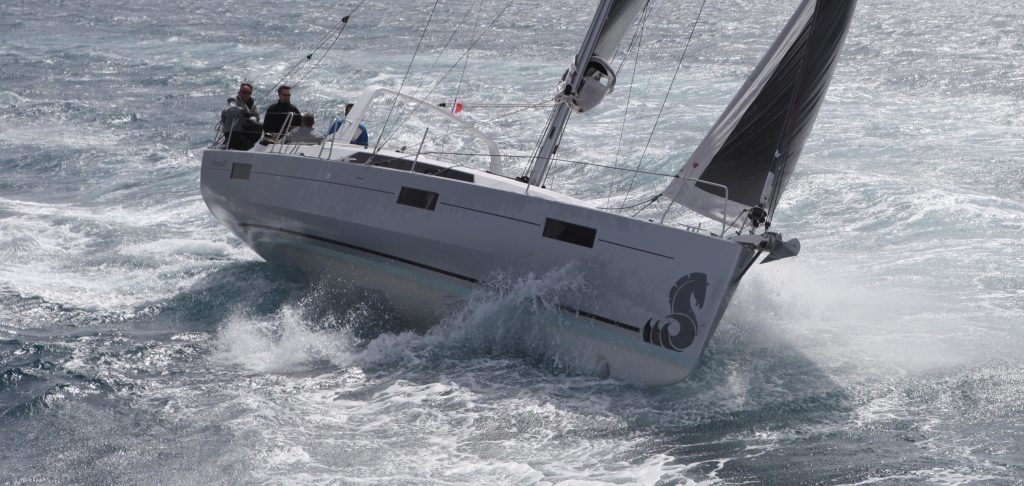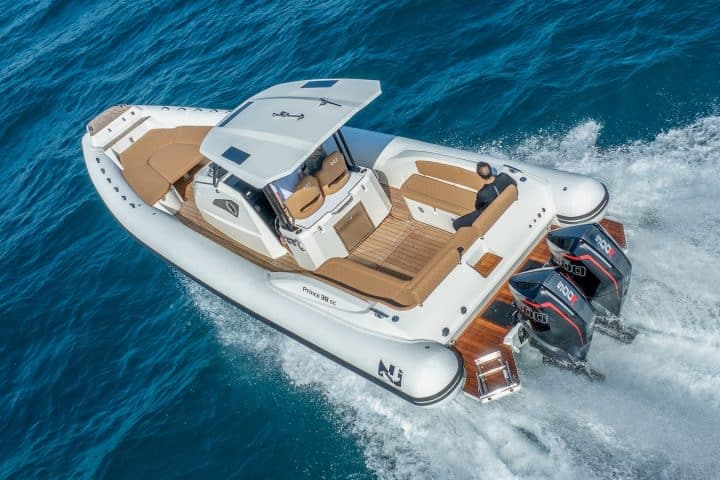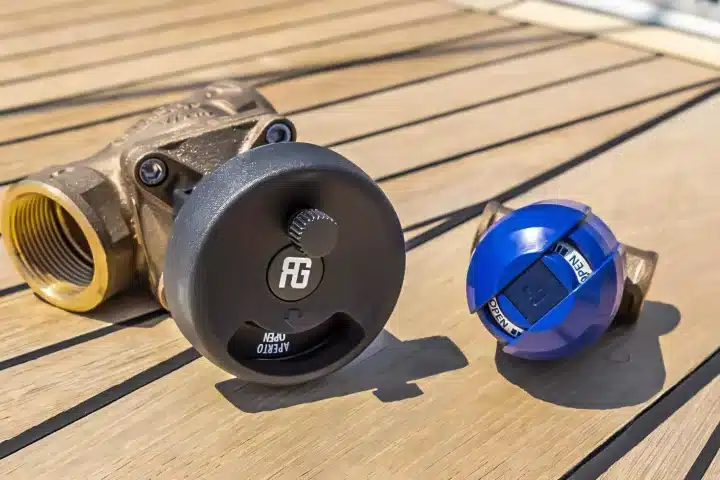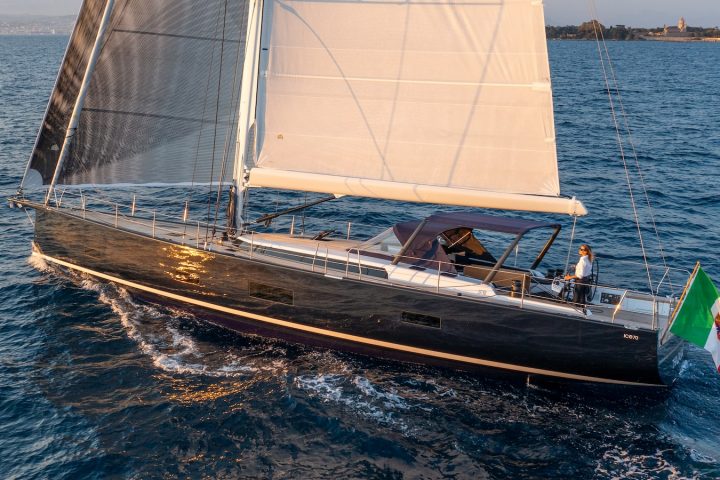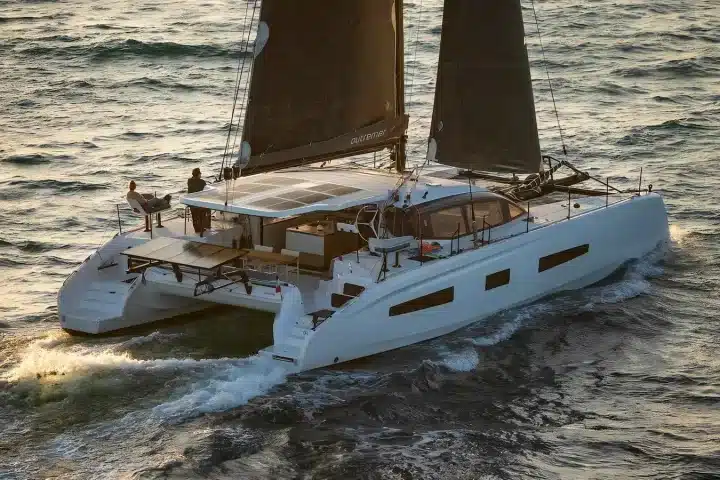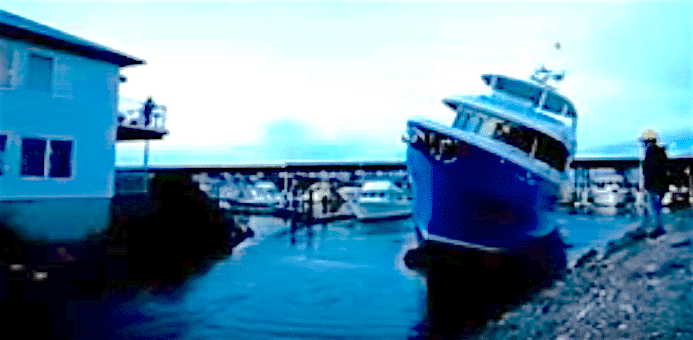Leggi l’articolo in italiano
When you see it on the dock you are immediately impressed by two things: first of all, the beautiful design of the entire astern zone. Retractable dash board (electrically, with a manual safety system) with double step and extendable stepladder, two lateral lifting seats (through some gas pistons), a room for the auto-inflatable raft, double wheel with a very large central passage. So, a small flattop for family holidays. There’s a lot of space anywhere, circulation is easy and everything is very functional.
Secondly: the hull; 41.1 is very wide and it’s all out of the water. The maximum beam is 423 cm and, just to give you an idea, Oceanis Clipper 393 (sharing the same length but with a 15 years older planning experience) is 396 cm. A difference which astonishes especially because such a generosity starts at almost mid-boat and it has no end.
Waterlines follow the previous ones of Oceanis 40 but the new deck, made through infusion, is 700 Kg lighter. However, the fore fuel tank is a little bulky and it could be avoided, since there is enough space and lockers everywhere.
Another surprise is the single helm. The traditional corner design is generally combined with a double blade. But here not, which implies some interesting consequences in terms of driving “sensations”. But we’ll talk about this later.
The deck
Here, everything is very tested. We are within the realm of pure cruise, where each manoeuvre must be easy and safe. So, the choice of a roll-bar with a fixed mainsail sheet point and an optional German system in the cockpit and near the helmsman. All in all, everything is practical and the father/skipper/shipowner can travel with no problem. Only a note… a slightly larger winch could be better.
As already said, the astern zone is perfect. The cockpit, too, is good, with a table which is big enough when it is open and not too big when closed. We don’t like, however, seatbacks, a little too low to support no-very young backs.
The roll-bar goes almost unnoticed and we like it very much.
Gangways are a little narrow near the cockpit entrance but a strong gangway on the roll-bart helps to move safe. Very good the traditional design of the fore zone, with anchor, pulley and fitting (with no provision for fore sails)
Interiors
The possible configurations are four.
The basic layout has a fore cabin and an astern one on the right (on the left, there is a big technical locker) and a bathroom at mid-boat. Then, there are other two versions: three cabins (with two astern twin ones) and a bathroom, two cabins and two bathrooms 
The starting point is always the beautiful Nauta’s design, which is able to make any room larger than it is, first of all thanks to the particular perspective below deck, with some horizontal lines, double windows and very far vanishing points.
We like the idea of a fore flip bulkhead; this way, it’s possible to create a unique open space between the cabin and the dinette. As regards woods, you can chooce between a super classic dark mahogany or a clear oak (according to us,this second option is the best one).
All in all, the large hull design gives lots of volumes especially from the poop to the mid-boat, with two large cozy cabins (in the test version) . The heights are 193 cm at the entrance and 111 cm above the double berth (207×147 cm). The fore cabin has a very large passageway 
Finally, there is a small but useful chart table in the fore zone, near the bulkhead. Thanks to its diagonal position, it is particularly practical.
Performances
We took our first measurements of sailing speed in a moment where real wind was only 12 knots. The ideal Mediterranean breeze. Our crew was made up of six people, our water tank was full and our equipments complete.
Numbers are really good, with a suprising close-hauled: by stressing it at about 30° we sailed at 6.7 knots, while by bearing away we travelled at 6.9 knots and at 40° we were at 7.8/8.0 knots. Not bad, if we consider the presence of a little wave (the boat we tested was provided with two good Elvström sails you can buy as optional at 5,500 Euros) and not stable wind.
Excellent our feeling with the helm; the boat tends to sail a little swerved but the bow never pulls downwards under gust (and by removing the fore tank it would be even better). The boat is light enough on wheels and we feel that the helm is only one. All in all, a lowered barycentre and displacement, thin and strong lines help a lot.
Good performances when we bear away: with the code zero and a real wind of about 12/13 knots, we sail at 100° and 8.5 knots ( 120° at 7.2 knots). The boat leans on the astern corner and sails on rails.
We tested 41.1 even in more difficult conditions, with a 25-knot-wind and a rolled genoa of about -20%. The feeling is always good, the boat likes sailing a little swerved but the load on the helm is always very light. The good cockpit design makes, after a minute, the crew unaware of the inclination.
Engine speeds are in the average: 8.5 knots at 3,000 revolutions, 6.5 knots at 2,000 revolutions and 7.4 knots at 2,500 revolutions. The astern cabin is quite silent: between 76.69 and 72 dbA.
Oceanis 41.1 – Technical file
Overall Length: 12.43 m
Hull length: 11.98 m
Floating Length: 11.37 m
Maximum width: 4.20 m
Draught: 2.18 m (opt. 1.70)
Weight: 8,777 kg
Ballast weight: 2,300 kg (2,507 kg with short keel)
Boat weight/ballast ratio: 26%
Mast
9/10 splitted, two series of quartered crosstrees
Mainsail sailing area: 43.10 sq.m.
Jib sailing area (104%): 42.00 sq.m.
Gennaker sailing area: 130 sq.m.
Staysail sailing area (with genoa furler): 20.90 sq.m.
I: 16.03 – J: 5.17 – P: 15.40 – E: 4.71
Engines and systems
Tested boat: Yanmar 4JH45 CR SD 33KW (45CV) diesel
Propeller: 3 Flexofold blades
Water Tanks: 240 l (+ 330 l optional)
Fuel Tanks: 200 l
CE Planning Category: A
People: 9 persone
Project: Naval architecture, Finot – Conq and partners – interiors by Nauta Design
Builder, Bénéteau, www.beneteau.com
Construction
Polyester monolite hull, structural monolithic counter-mould glued to the hull, deck (made through injection) made of a sandwich of glass-fibre and Saeform-foam covered with antiskid; cast iron keel fixed through bolts and stainless glued counter-plate; helm with composite glass axle.
Prices
Basic Price: 142,000 Euros (VAT excluded)
Price of the full-optional tested boat: 214,000 Euros (VAT excluded)
